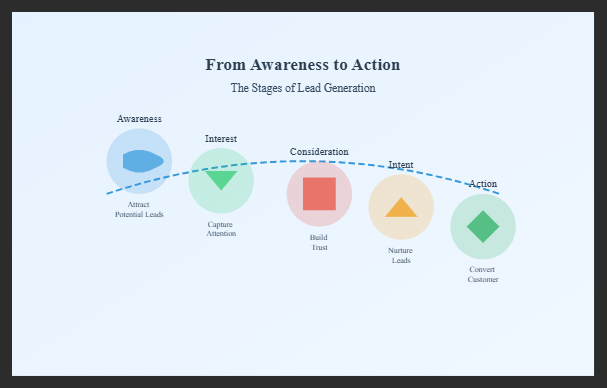From Awareness to Action: The Stages of Lead Generation Explained
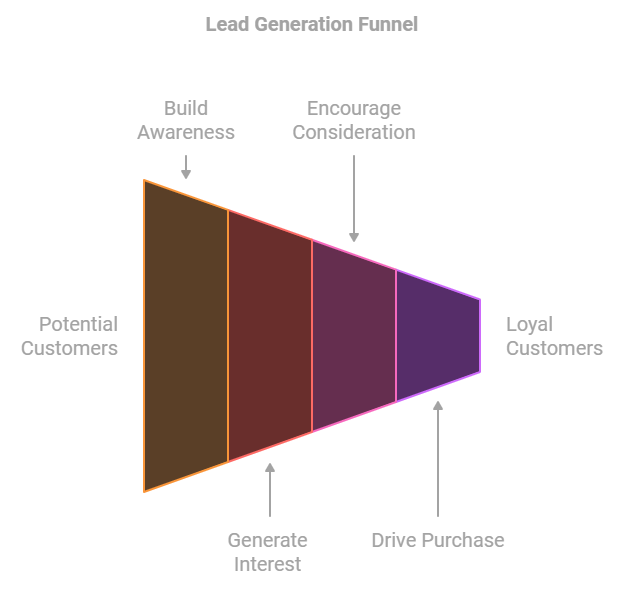
The process of creating interested leads involves attracting potential customers converted by modern marketing. Understanding lead generation is fundamentally important to businesses growing and thriving in competitive markets. It’s not just a contact list; it’s about relationships and guides prospects through their buying journey. At its very core, lead generation lies the marketing funnel, a conceptual model that seeks to depict the flow of the buying process.
Appropriate selection begins with the first time a person encounters a brand or product. It is, in fact, this once-initiated awareness stage that is of great importance in getting the tone for further engagement. Once that awareness has been built, the goal changes into establishing interest and therefore, interest. During this step, marketers have to provide relevant content and material to audiences so that they would realize how the product or service meets their needs.
It is a stage of focused messaging and strong communication means for converting curiously to real interest. Moving down the funnel, leads are weighing their options and comparing the benefits of solutions they might consider. Understanding this evaluation phase fully prepares the marketer for coming up with objections to be fought off with unique selling propositions that would make their brand the obvious choice.
Finally, a successful lead generation message focuses on a purchase decision. However, a purchase is just half the battle; post-purchase engagement is equally important in perpetuating loyalty and inspiring word of mouth. By understanding each step in the lead generation process, marketers can construct suitable strategies for attracting leads through the funnel and not just through attracting leads.
This would make it possible for businesses to transition seamlessly from awareness to action, thereby sustaining a business’s growth and establishing it for the long term.
Stage 1: Awareness

Potential clients initially come into contact with your brand or product during the awareness stage, which is the start of the lead generation process. The main goal at this point is to draw interest and educate your target market on what you have to offer.
Key Activities
Content Marketing :
Create interesting content that speaks to the interests and problems of your audience, such as blogs, videos, and infographics. Create engaging stories that enthrall potential leads by using storytelling strategies.
Social Media Engagement:
Use social media sites like Facebook, Instagram, LinkedIn, and Twitter to engage with your audience and promote your content, building deep relationships in the process. Reach particular demographics with tailored advertisements to increase website or landing page visitors. Use direct messages, shares, and comments to interact with others and foster brand loyalty. Regular and well-planned social media use can greatly increase brand awareness and visibility.
Search Engine Optimization(SEO) :
Use SEO techniques to improve your content and website so that it appears higher in search engine results. To find the words and phrases your audience is looking for, do in-depth keyword research. To raise your content’s search engine ranks and draw in more natural traffic, naturally use these keywords. To remain competitive and adapt to shifting search trends, update and improve your SEO strategies on a regular basis.
Stage 2: Interest
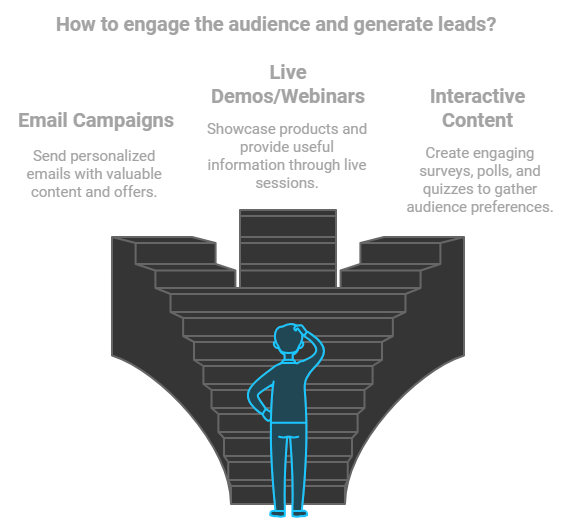
The goal of the interest stage is to convert potential leads’ initial awareness into sincere interest. Here, marketers try to draw in customers and pique their interest so they will investigate their products.
Key Activities
Customized Email Marketing:
1. Send individualized email campaigns with insightful content that speaks to your audience’s needs and problems.
2. Incorporate educational materials, business analysis, or special deals to spark interest and promote continued participation.
Live demos and webinars:
1. Organize live demonstrations or webinars that showcase the strengths and advantages of your goods and services.
2. To build a stronger relationship with your audience, give them useful information and promptly respond to their inquiries.
Interactive Content:
1. Make interesting surveys, polls, or quizzes to entice participation and learn more about the preferences of your audience.
2. To pique curiosity and provide prospective leads with a more tailored experience, use interactive material.
Stage 3: Consideration
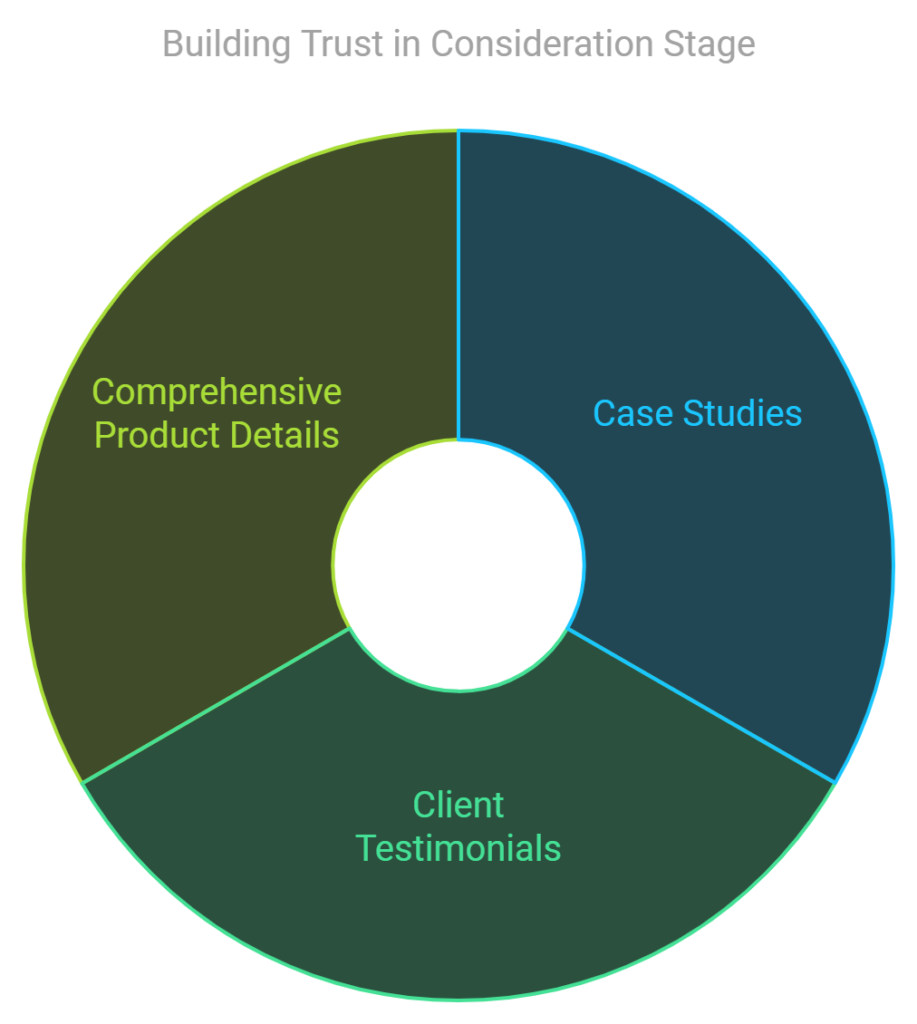
Leads actively weigh their options and compare their products to those of their competitors throughout the contemplation stage. As prospective clients consider their options, this phase is crucial for developing credibility and confidence.
Key Activities
Providing Case Studies:
1. Provide thorough case studies that demonstrate effective product or service implementations with tangible outcomes.
2. To demonstrate the worth and efficacy of your solutions, present statistics and client endorsements.
Testimonials
1. Use client endorsements to establish social proof and show the dependability and caliber of your business.
2. To connect with various target audience segments, highlight a range of customer experiences.
Comprehensive Product Details
1. To allay possible queries and worries, give comprehensive product details, such as features, advantages, and applications.
2. Provide printable resources or make this information readily available on your website.
Stage 4: Intent

Leads show a definite desire to buy from you or interact with your company more at the intent stage. At this point, consideration gives way to readiness, therefore it’s critical to properly cultivate these leads.
Offering Free Trials:
1. Give leads free samples or trials so they can try your product out for themselves, which lowers perceived risk and promotes commitment.
2. To guarantee a satisfying experience, emphasize the special qualities and advantages during the trial.
Consultations and Demos:
1. Provide one-on-one consultations or live demonstrations to highlight how your product or service fits their unique requirements.
2. Take use of these chances to clarify their intentions and answer any queries or worries.
Personalized Email Follow-Ups
1. Based on prior contacts, send customized email follow-ups that speak to each lead’s particular needs and interests.
2. To keep them interested and informed, include pertinent content like success stories or extra resources.
Stage 5: Evaluation
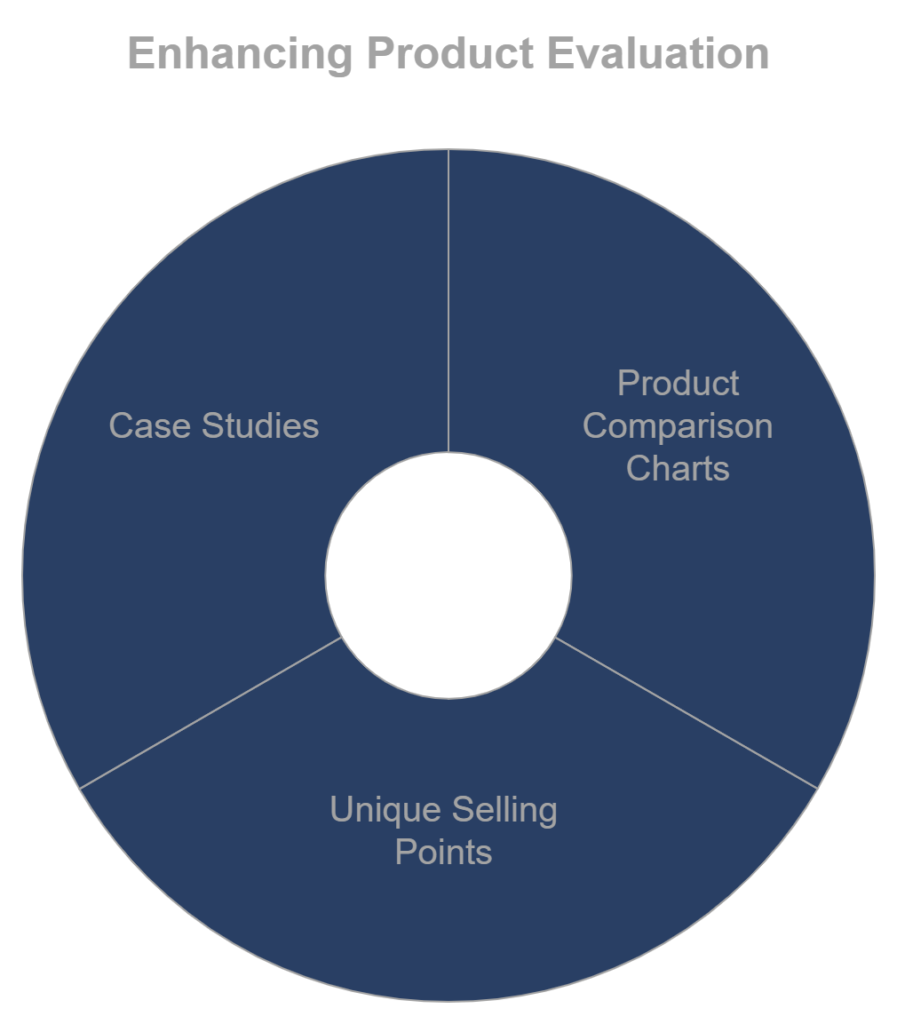
Leads are carefully evaluating your product or service against those of your rivals throughout the evaluation stage in order to identify the best fit for their requirements. This phase is essential for resolving any last issues and setting your products apart.
Key Activities
Comprehensive Product Comparisons:
1. Provide thorough product comparison charts that emphasize salient characteristics, costs, and advantages over rivals.
2. To help leads understand the value, make sure the comparison highlights the areas in which your product performs better than others.
Emphasizing USPs (unique selling points):
1. Pay attention to your product’s competitive advantages and unique selling points (USPs), such as improved customer service, cutting-edge technology, or a cheaper cost of ownership.
2. Make use of case studies or testimonies that demonstrate these advantages in practical settings.
Resolving Disputes:
1. By using material or direct communication, you can proactively address typical objections or hesitations.
2. To dispel any questions and confirm the appropriateness of your product, offer resources such as frequently asked questions or professional opinions.
Stage 6: Purchase
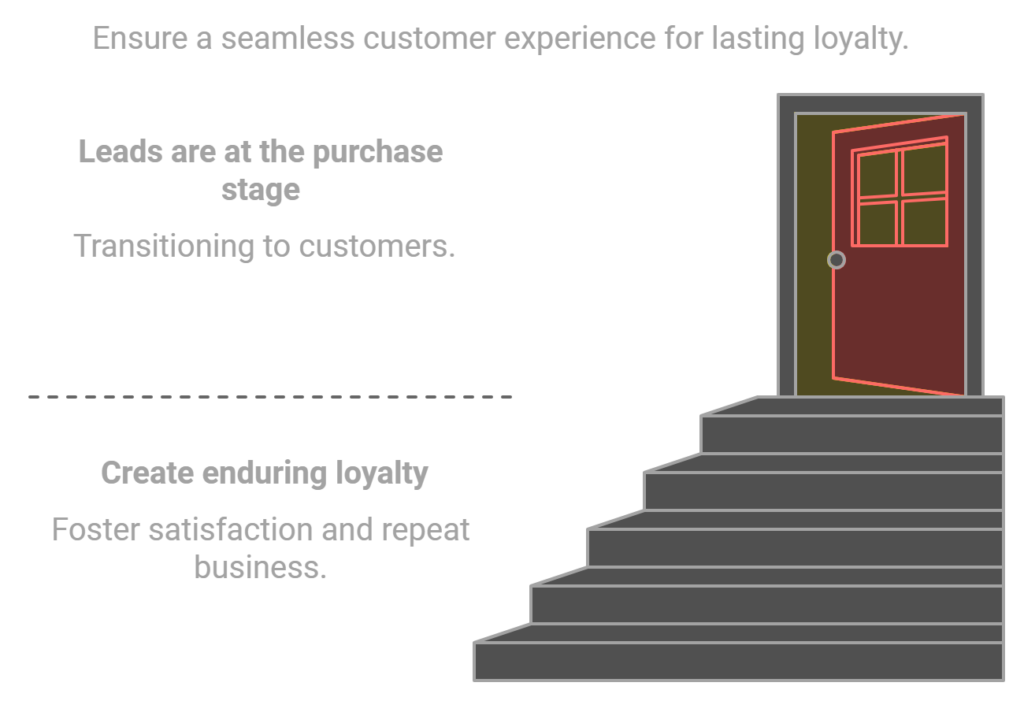
The lead makes the ultimate choice and becomes a customer at the buying stage. Making sure they have a seamless, satisfying experience that supports their choice and creates the conditions for enduring loyalty is the main goal of this stage.
Key Activities
Streamlining the Purchasing Process
1. Whether purchasing online or in person, make sure the procedure is easy, quick, and user-friendly.
2. Reduce friction by making it as simple as possible for customers to finish their purchases by providing a variety of payment methods, unambiguous instructions, and transparent pricing.
Providing Exceptional Customer Support:
1. Provide prompt, easily reachable customer service to address any queries or problems that may arise both during and after the purchase.
2. Use help centers, dedicated support lines, or live chat to assist customers during the buying process.
Follow Up communication
1. After a purchase, thank customers, inquire about their experience, and make sure they are satisfied by sending follow-up emails or phone calls.
2. To increase client loyalty, take advantage of this chance to get feedback and promote recommendations or evaluations.
Conclusion
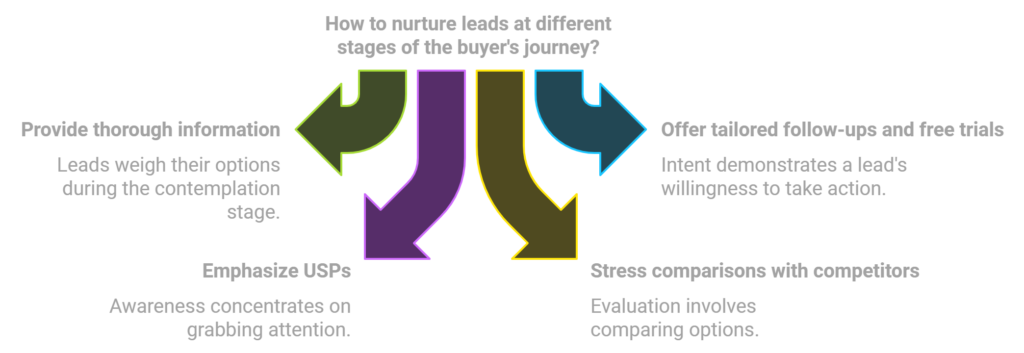
Businesses hoping to turn leads into devoted clients must comprehend every step of the lead generation process. Every phase of the buying process, from awareness to purchase, offers special chances to interact with, develop, and mentor potential clients. Businesses can apply more successful methods that are suited to the lead’s stage of the process by identifying the behaviors and needs at each one.
While interest fosters curiosity through worthwhile information, awareness concentrates on grabbing attention. Leads weigh their options during the contemplation stage, so it’s critical to give them thorough information and emphasize your USPs. Since intent demonstrates a lead’s willingness to take action, tailored follow-ups and free trials can support their choice. Comparisons with competitors take place throughout evaluation, thus it’s important to stress.
More effective lead generation results from techniques that are tailored to the unique requirements of leads at each step. Businesses may more effectively nurture leads, increasing conversions and fostering enduring customer relationships, by addressing the particular possibilities and difficulties at each stage.
Businesses can maximize lead generation, enhance conversions, and cultivate enduring client connections by putting tactics into place that correspond with each step.
